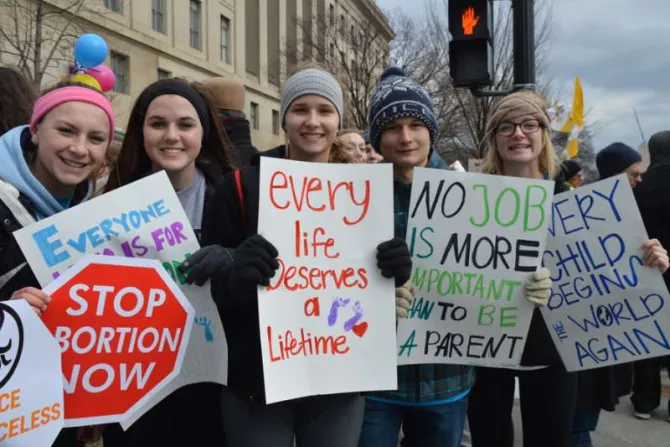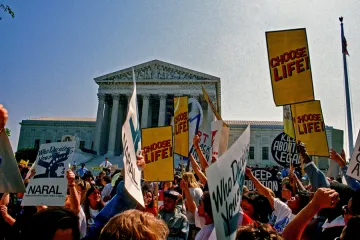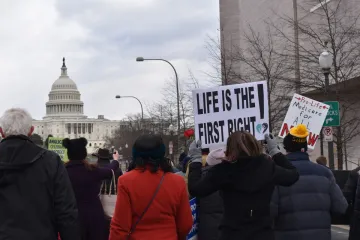In this 1883 case the court unanimously upheld an Alabama anti-miscegenation law prohibiting interracial marriage. It held that the law did not violate the equal protection clause because it punished equally whites and non-whites: “Whatever discrimination is made in the punishment prescribed in the two sections is directed against the offence designated and not against the person of any particular color or race. The punishment of each offending person, whether white or black, is the same.”
This was overturned by two cases in the 1960s. The 1964 decision McLaughlin v. Florida found unconstitutional a Florida law that barred unmarried persons of the opposite sex and when one is white and the other black from habitual cohabitation. And 1967’s Loving v. Virginia struck down a state law prohibiting interracial marriage as violating the equal protection and due process clauses of the Fourteenth Amendment.
Plessy v. Ferguson
This 1896 decision established the “separate but equal” doctrine that permitted racial segregation laws provided that provisions for the races were of equal quality.
In the 7-1 decision the court said that the Fourteenth Amendment’s equal protection clause didn’t require that “all distinctions based upon color” be eliminated, upholding a Louisiana law that required separate but equal train cars for whites and blacks. The decision held that state legislatures have broad powers to write laws they deem reasonable, so long as they are not intended to oppress a particular class, and that enforced racial segregation does not mark one group with “a badge of inferiority.”
Justice John Marshall Harlan dissented, writing that Louisiana’s Separate Car Act was plainly intended “to exclude colored people from coaches occupied by or assigned to white persons,” compelling blacks “to keep to themselves while traveling in railroad passenger coaches.” He added that the constitution “is color-blind, and neither knows nor tolerates classes among citizens. In respect of civil rights, all citizens are equal before the law. The humblest is the peer of the most powerful. The law regards man as man, and takes no account of his surroundings or of his color when his civil rights as guaranteed by the supreme law of the land are involved.”
Plessy was effectively overturned in 1954 by Brown v. Board of Education. That unanimous decision found that racially separate schools “are inherently unequal,” violating the equal protection clause.
Korematsu v. United States
In this 1944 case the court upheld by 6-3 an order that excluded persons of Japanese ancestry from the West Coast during World War II. This exclusion order led to the internment of some 120,000 Japanese Americans.
A 1942 executive order had permitted the War Department to designate military areas from which any or all persons may be excluded, in the interest of preventing espionage and sabotage during the state of war. The U.S. Army then created a military area on the West Coast from which persons of Japanese ancestry were excluded.
Fred Korematsu was a California native who refused to leave his home, and challenged the exclusion order under the Fifth Amendment’s due process clause.
(Story continues below)
Subscribe to our daily newsletter
The court’s majority opinion held that the exclusion order was not made out of hostility to Japanese-American individuals or their race, but because the military had deemed it necessary for security during the war. In a concurring opinion, Justice Felix Frankfurter held that the war powers clause gives Congress the ability to enforce military orders deemed appropriate for conducting war.
The three dissenting justices each wrote opinions, all of them holding that the exclusion order was racially discriminatory. Justice Owen Roberts wrote that “it is the case of convicting a citizen as a punishment for not submitting to imprisonment in a concentration camp, based on his ancestry, and solely because of his ancestry, without evidence or inquiry concerning his loyalty and good disposition towards the United States.”
Korematsu has been widely reprobated since the 1980s, and it was effectively overturned by a passing remark in the 2018 5-4 decision in Trump v. Hawaii. There, Chief Justice John Roberts wrote that “The forcible relocation of U.S. citizens to concentration camps, solely and explicitly on the basis of race, is objectively unlawful and outside the scope of Presidential authority,” and that it “is already obvious … Korematsu was gravely wrong the day it was decided, has been overruled in the court of history, and — to be clear — 'has no place in law under the Constitution.'” Justice Sonia Sotomayor’s dissent, which was joined by Justice Ruth Bader Ginsburg, also repudiated Korematsu.
In his dissent from the 5-4 decision Stenberg v. Carhart in 2000, which struck down a Nebraska ban on partial-birth abortion, Justice Antonin Scalia wrote that “I am optimistic enough to believe that, one day, Stenberg v. Carhart will be assigned its rightful place in the history of this Court's jurisprudence beside Korematsu and Dred Scott.”
Apodaca v. Oregon
In this 1972 decision the court ruled that the Sixth Amendment right to trial by jury is not violated by non-unanimous verdict for conviction by state juries in criminal cases. The plurality opinion was held by four justices, with a fifth writing a concurring opinion. Oregon’s constitution allowed a verdict to be reached by 10 members of a 12 person jury.







